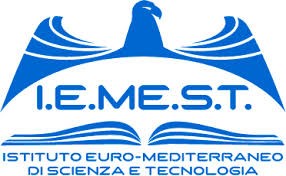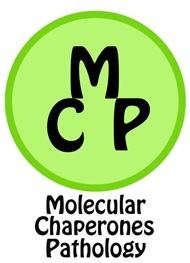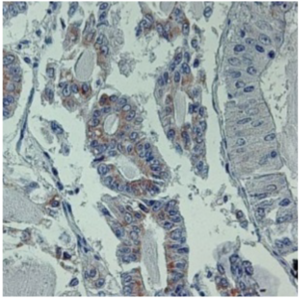Presentation of the new IEMEST Laboratory of Neuroanatomy (LoN) as part of the pole of innovation “cyber brain” and study of chaperonopathies affecting the nervous system
By Francesco Cappello, M.D. – Euro-Mediterranean Institute of Science and Technology (IEMEST), Palermo, Italy
Bartolomeo Sammartino, M.Sc. – IEMEST
Everly Conway de Macario, Ph.D. – School of Medicine, University of Maryland at Baltimore, and IMET, Columbus Center, Baltimore, MD 212012, USA
Alberto J. L. Macario, M.D – IEMEST; and School of Medicine, University of Maryland at Baltimore, and IMET, Columbus Center, Baltimore, MD 212012, USA
Corresponding author: Ajlmacario@som.umaryland.edu
You can download this article as a PDF here.
 The Institute. The Euro-Mediterranean Institute of Science and Technology (IEMEST) is a not-for-profit research organization, recognized by the Italian Ministry of Education, University and Research (MIUR) and by the European Union (E.U.), and registered in National and International databases for the research associations.
The Institute. The Euro-Mediterranean Institute of Science and Technology (IEMEST) is a not-for-profit research organization, recognized by the Italian Ministry of Education, University and Research (MIUR) and by the European Union (E.U.), and registered in National and International databases for the research associations.
Further information can be found at www.iemest.eu and on the Going International Blog.
IEMEST has recently participated in the project “Pole of Innovation Cyber Brain” aiming to build a new biotechnological platform located in the Italian regions of Campania and Sicily and dedicated to neurocybernetics. The Funder was MIUR by the call “PON ‘Ricerca e Competitività’ 2007-2013, 4.1.1.4;” and co-funding E.U. Partners for this project were the “NEUROMED” Foundation and the “NEURONE” Foundation, both based in the Italian Region of Campania, while the IEMEST is based in Sicily. By this project, the partners created an infrastructure of excellence in the South of Italy with the aim to develop implantable devices and neuro-prostheses that can capture and transmit neural signals and can be used to study diverse neurological disorders. These activities will be closely related to the study of greatly miniaturized brain implants. For instance, wireless signals will be used for monitoring patients with brain pathologies. A training project has been also developed to prepare qualified personnel specialized in the cross-cutting areas of the Cyber Brain Pole.
Laboratory of Neuroanatomy (LoN). In the context of the Pole, IEMEST established a modern and well equipped Laboratory of Neuroanatomy (LoN) devoted to the study of the bio-compatibility and bio-absorbability of the implantable devices. These experiments will be performed using in vitro, in vivo, and ex-vivo methods that include: 3D neuronal cultures; measurement of levels, expression and post-translational modifications of stress-related proteins; study of cell-to-cell cross-talk via nanovesicles; and other advanced and pioneering techniques. LoN has been equipped with state-of-the-art research instruments, including confocal and other high resolution microscopes, flow cytometer, ultracentrifuge, multiplex system, real-time PCR, mass spectrometer, high-performance liquid chromatography, high performance computing system, and other devices for sophisticated morphological, biochemical, molecular, and proteomic analyses.
 Molecular chaperones and chaperonopathies. A team of researchers at LoN is already working in various neuroanatomical projects. The most ambitious objective is to understand the mechanisms by which the impairment of molecular chaperones (one or several in the same individual) can lead to development of chaperonopathies affecting the nervous system (NS). In fact, IEMEST has been established as an international research center devoted to the study of these pathological conditions that may affect people at every age, from birth to senescence. Last year, the Institute launched a webpage by which physicians, researchers, and patients may contact IEMEST specialists for consultations about chaperonopathies, including those pertinent to the NS. For further information, please visit this Website.
Molecular chaperones and chaperonopathies. A team of researchers at LoN is already working in various neuroanatomical projects. The most ambitious objective is to understand the mechanisms by which the impairment of molecular chaperones (one or several in the same individual) can lead to development of chaperonopathies affecting the nervous system (NS). In fact, IEMEST has been established as an international research center devoted to the study of these pathological conditions that may affect people at every age, from birth to senescence. Last year, the Institute launched a webpage by which physicians, researchers, and patients may contact IEMEST specialists for consultations about chaperonopathies, including those pertinent to the NS. For further information, please visit this Website.
Chaperonopathies and the nervous system. The chaperonopathies affecting the NS are numerous and varied. First of all, it has to be emphasized that the Chaperoning System participates extensively in the development, functioning, protection, and repair of the NS from conception to old age. It is, therefore, not surprising that if a member of the chaperoning system is defective and malfunctioning, or is absent or non-functional, namely if a chaperonopathy occurs, there will be consequences affecting the NS integrity and functionality.
As is well known, the NS is composed of various anatomic-functional divisions such as, for example, the central and peripheral NS, motor (efferent) and sensory (afferent), and the somatic and visceral (autonomic) and the sympathetic and parasympathetic divisions:. The components of anyone of those divisions can be affected by a chaperonopathy, which will lead to a pathological condition clinically apparent as a neurological disease. The challenge nowadays is to determine which among various individuals with very similar signs and symptoms does carry a chaperonopathy as part of the pathogenesis leading to the condition that brought the patient to the neurologist. It is very likely that patients labelled as suffering from the same disease are not all equal in terms of pathogenesis and, therefore, could be subdivided into different groups amenable to distinct therapeutic interventions, which would be specifically directed against the pathogenic component that distinguish one patient from another. Among these distinctive pathogenic components are the chaperonopathies that, as mentioned earlier, contribute to disease initiation and progression in many neurological conditions.
The chaperones already identified as etiologic-pathogenic factors in neurological diseases belong to all the groups known, namely:
– small Hsp (sHsp);
– chaperonins of Group I (e.g., the mitochondrial Hsp60 or Cpn60)
– and of Group II (e.g., CCT4 and CCT5);
– Hsp40/DnaJ (e.g., DnaJB2, DnaJB6, DnaJC6, etc.);
– Hsp70/DnaK (e.g., mtHsp70 or mortalin);
– Superheavy (e.g., sacsin);
– dedicated chaperones (e.g., co-factor E for microtubule biogenesis, spastin, etc.);
– mitochondrial (e.g., mortalin already mentioned above, DnaJC19, paraplegin, etc.),
– and endoplasmic reticulum (e.g., S1L1) chaperones.
Also, all types of chaperonopathies, by defect, by excess, and by mistake have been implicated in neurological disorders. Therefore, it is clear that nowadays the neurologist must be prepared to identify chaperonopathies and determine if one or more chaperones are involved in the mechanisms of disease in a patient.
Likewise, the neurological conditions in which a chaperonopathy has been identified are many and diverse, and can affect one or more components of anyone of the NS divisions, for example:
– Charcot-Marie-Tooth,
– Distal Hereditary Neuropathies (motor, sensory, sensory-motor, sensory-autonomic),
– spastic paraplegias,
– muscular dystrophies of various types,
– neurodegenerative disorders (e.g., Parkinson’s, Alzheimer’s, and Huntington’s diseases),
– Amyotrophic Lateral Sclerosis,
– conditions characterized by autoimmune phenomena (e.g., myasthenia gravis),
and many others.
International collaborations and encouraging results. Research conducted so far includes epilepsy, some forms of distal neuropathies, brain tumors, and some forms of autoimmune diseases (e.g., myasthenia gravis). IEMEST researchers are working in close collaboration with other centers in USA (Baltimore, MD; Galveston, TX; New York, NY; and Philadelphia, PA) and in Europe (Msida, Malta; and Cardiff, UK). The results obtained thus far have been published in refereed journals and a few examples are:
Epilepsy: Marino Gammazza A, Colangeli R, Orban G, Pierucci M, Di Gennaro G, Lo Bello M, D’Aniello A, Bucchieri F, Pomara C, Valentino M, Muscat R, Benigno A, Zummo G, Conway de Macario E, Cappello F, Di Giovanni G, Macario AJL. Hsp60 response in experimental and human temporal lobe epilepsy. Sci Rep. 2015 Mar 24;5:9434.
Distal neuropathy: Min W, Angileri F, Luo H, Lauria A, Shanmugasundaram M, Almerico AM, Cappello F, Conway de Macario E, Lednev IK, Macario AJL, Robb FT. A human CCT5 gene mutation causing distal neuropathy impairs hexadecamer assembly in an archaeal model. Sci Rep. 2014 Oct 27;4:6688.
Brain tumors: 1) Rappa F, Unti E, Baiamonte P, Cappello F, Scibetta N. Different immunohistochemical levels of Hsp60 and Hsp70 in a subset of brain tumors and putative role of Hsp60 in neuroepithelial tumorigenesis. Eur J Histochem. 2013 Jun 28;57(2):e20.
2) Rappa F, Cappello F, Halatsch ME, Scheuerle A, Kast RE. Aldehyde dehydrogenase and HSP90 co-localize in human glioblastoma biopsy cells. Biochimie. 2013 Apr;95(4):782-6.
3) Kast RE, Boockvar JA, Brüning A, Cappello F, Chang WW, Cvek B, Dou QP, Duenas-Gonzalez A, Efferth T, Focosi D, Ghaffari SH, Karpel-Massler G, Ketola K, Khoshnevisan A, Keizman D, Magné N, Marosi C, McDonald K, Muñoz M, Paranjpe A, Pourgholami MH, Sardi I, Sella A, Srivenugopal KS, Tuccori M, Wang W, Wirtz CR, Halatsch ME. A conceptually new treatment approach for relapsed glioblastoma: coordinated undermining of survival paths with nine repurposed drugs (CUSP9) by the International Initiative for Accelerated Improvement of Glioblastoma Care. Oncotarget. 2013 Apr;4(4):502-30.
Myasthenia gravis: 1) Marino Gammazza A, Bucchieri F, Grimaldi LM, Benigno A, Conway de Macario E, Macario AJL, Zummo G, Cappello F. The molecular anatomy of human Hsp60 and its similarity with that of bacterial orthologs and acetylcholine receptor reveal a potential pathogenetic role of anti-chaperonin immunity in myasthenia gravis. Cell Mol Neurobiol. 2012 Aug;32(6):943-7.
2) Cappello F, Marino Gammazza A, Zummo L, Conway de Macario E, Macario AJL. Hsp60 and AChR cross-reactivity in myasthenia gravis: An update. J Neurol Sci. 2010 May 15;292(1-2):117-8.
Other projects that are currently underway pertain to Alzheimer’s disease, and hereditary spastic paraplegias and other neuromuscular disorders.
IEMEST researchers are open to present joint applications to E.U. calls with other European Researchers and Research Centers. Contact addresses are:
francescocappello@iemest.eu;
albertomacario@iemest.eu,
direzionegenerale@iemest.eu.
Perspective. Development of implantable devices and neuroprostheses, which can capture and transmit neural signals for studying the various neurological diseases as aimed by LoN, is a worthwhile and promising endeavor. A new wide field of research is now open for exploration and the hopes are great for developing precise diagnostic means and efficacious therapies for these diseases, the majority of which are very severe, invalidating, and progressive. More information can be obtained by consulting the book “The Chaperonopathies” or visiting the associated Website.
Tip: More up to date educational events dealing with healthcare can be found online on the Education Database »medicine & health«.


